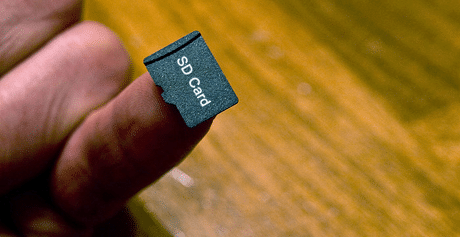Although we have benefited a lot from paperless data storage, increasing risks are coming towards us, too. So we must take some precautions to protect our data. In this article, some advice for data protections on SD cards will be introduced.
Without a doubt, the media where we can store our data are becoming more and more diverse, ranging from traditional devices, like hard drives, to mobile devices, like flash drives, SD cards and so forth. But irrespective of which storage media we opt for, it is vitally essential to take precautions to safeguard inner data.
The first and most important measure is to back up data. In an instance of hard drive, we can back up our PST files to the drive so that we will be able to recover PST mail readily from the backups when coming across unanticipated crashes. In addition, of course we should take other protective measures in the meantime. Here we will offer 5 suggestions for protecting data on SD Cards.

1. Password Protect Data
Firstly, you can password protect your data on the SD Card. It is much easier than the other ways mentioned below, even for novice. In the current software market, there are multiple password-protection applications available on the smartphone. You can easily procure one and create a password for your SD Card data. By this means, you can prevent unauthorized access, theft or vicious deletion.
2. Encrypt SD Cards
Compared with password-protection, encryption is somewhat more advanced. It will make the data invisible by hiding them with encryptions. In general, a lot of smartphones can undertake the encryption technology. Hence, you need to use a computer to operate the encryption software on SD Cards. It is recommended to encrypt the entire SD Card, such that no one can access the data without the key code.
3. Write-Protect Data
Write-protecting data is equal to lock the data. Via it, no one, including you, will be unable to access, delete and change the data on the media. Unlike password and encryption, write-protecting the data on SD Cards doesn’t demand any third party software. You can just get the SD card out of the device, then find the small switch at the left side of the card and lastly push the switch to the lock position. Later if you wish to access the data again, you can remove the write-protect by pushing the switch to the unlock position.
4. Prevent Physical Damages on SD Cards
As you know, the SD Card is the tiniest one among numerous storage media. But it is susceptible to physical damages likewise. Therefore, you should protect the tiny card on daily life, such as keep it away from any heavy stuff, water and fire. If possible, whenever it is not in use, you should storage it in safe conditions. Once the card is physically broken, no DIY software can help you. You have no choice but to ask professionals for assistance.
5. Keep SD Cards in Secure Location
Aside from physical damages, you should keep well-prepared for other accidents, like preventing the card from being stolen or destroyed artificially. That is to say, don’t let your SD cards go into the wrong hands. Therefore, always store your SD cards which carry your precious data in a secure location, such as a safe,
Author Introduction:
Shirley Zhang is a data recovery expert in DataNumen, Inc., which is the world leader in data recovery technologies, including repair SQL Server file error and outlook repair software products. For more information visit www.datanumen.com